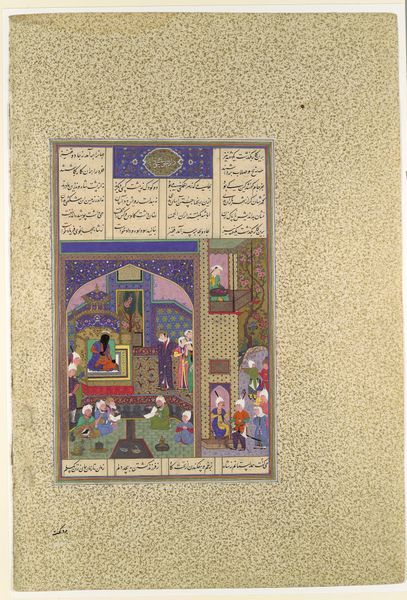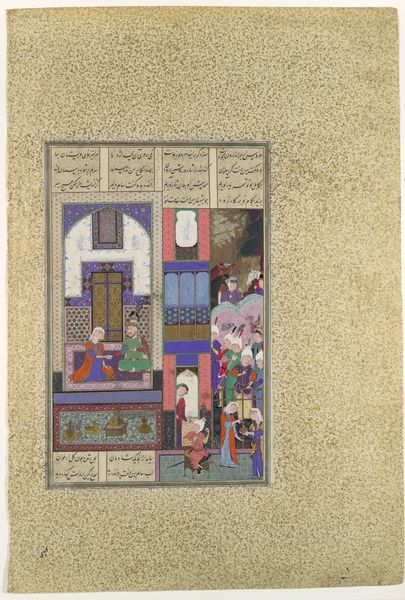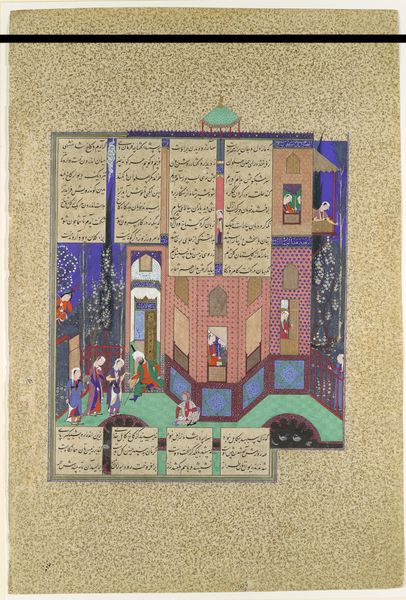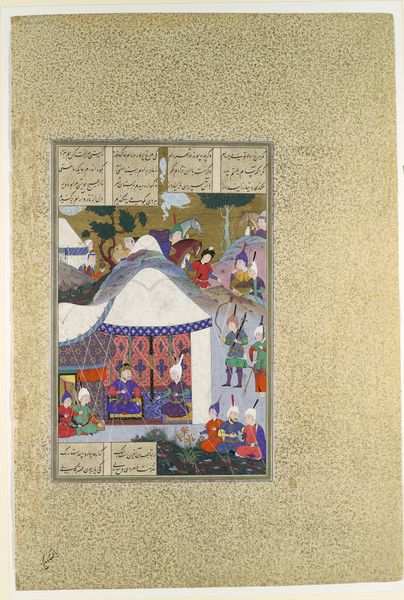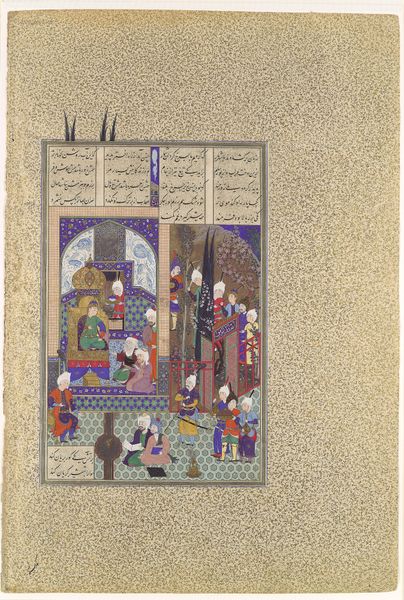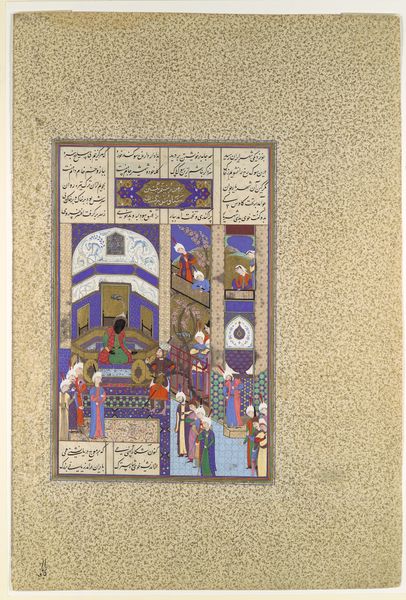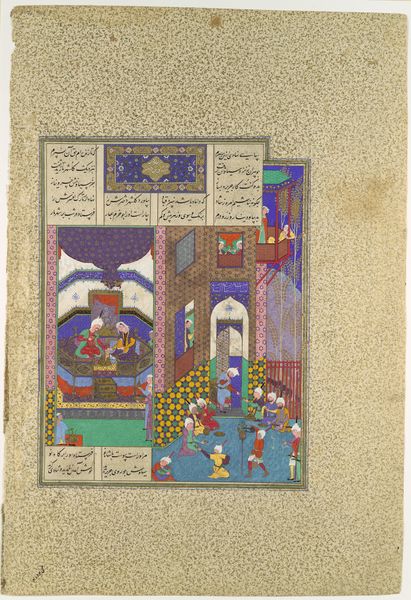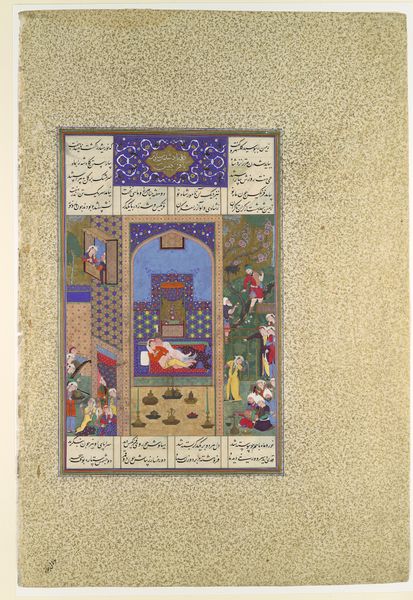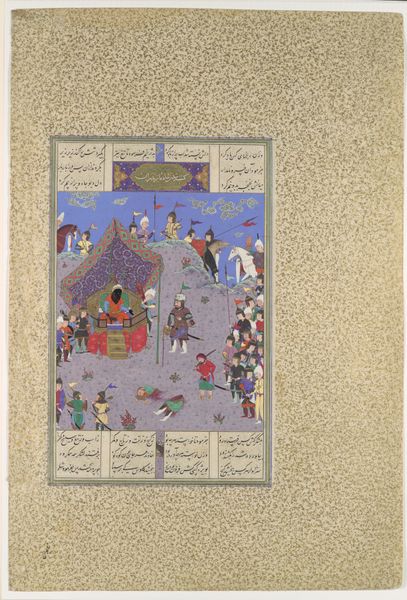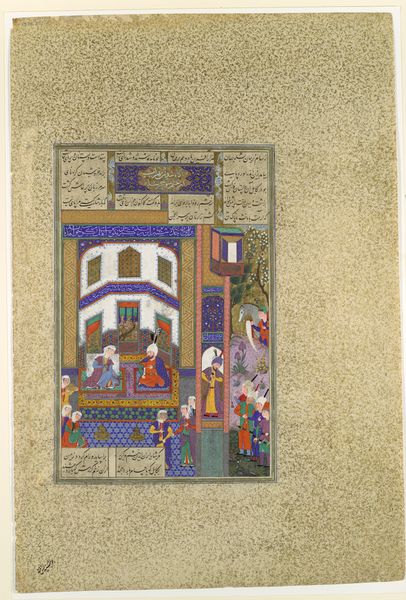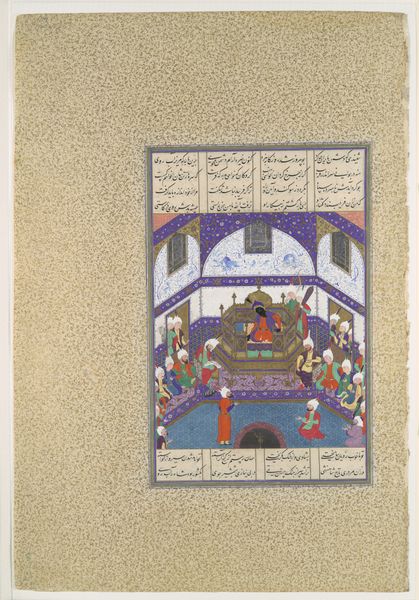
"Nushirvan Greets the Khaqan's Daughter", Folio 633v from the Shahnama (Book of Kings) of Shah Tahmasp 1505 - 1560
0:00
0:00
painting
#
narrative-art
#
painting
#
traditional media
#
historical fashion
#
islamic-art
#
history-painting
#
miniature
Dimensions: Painting: H. 7 3/8 in. (18.7 cm) W. 7 in. (17.8 cm) Entire Page: H. 18 5/8 in. (47.3 cm) W. 12 7/16 in. (31.6 cm)
Copyright: Public Domain
Editor: This painting, “Nushirvan Greets the Khaqan's Daughter,” comes from the Shahnama of Shah Tahmasp, made between 1505 and 1560. It's a miniature painting, currently at the Metropolitan Museum. I am immediately struck by how staged the scene feels. Everyone seems carefully placed, almost like actors on a set. What can you tell me about how such historical images function? Curator: Well, it’s vital to remember the Shahnameh was more than just a story; it was a symbol of Persian identity and royal power. This particular folio would have been incredibly precious, commissioned to project the image of a cultured and powerful ruler. Notice how Nushirvan, though greeting a guest, remains enthroned and slightly elevated? What does that choice suggest about power dynamics and how they're being communicated visually? Editor: It does look deliberate. He's positioned within this ornate architectural structure, separating him from the other figures and visually reinforcing his status. Were these images purely celebratory of royal life? Curator: Absolutely not. The commission itself was a strategic act. These lavish manuscripts were diplomatic tools, gifted to other rulers to display wealth and artistic achievement, asserting cultural dominance, but the focus also lands on the depiction of specific moral narratives of wise leadership and diplomacy. Who is depicted favorably and less favorably often sends particular signals and promotes key agendas. In effect, art like this becomes a visual instrument for statecraft. Editor: That's fascinating. So, it wasn't just about recording history but also shaping perceptions and power dynamics through art. Curator: Precisely. Reflect on how the very act of displaying this miniature within a museum continues to shape our understanding of Persian history and artistic accomplishment. Even today, it's performing a social function, influencing cultural narratives about the past. Editor: I never considered how deeply interwoven art, power, and social identity were in these historical contexts. It's given me a completely different perspective on what historical images can tell us. Curator: Exactly, understanding those relationships transforms the viewing experience, prompting deeper insights into socio-political dynamics.
Comments
No comments
Be the first to comment and join the conversation on the ultimate creative platform.
